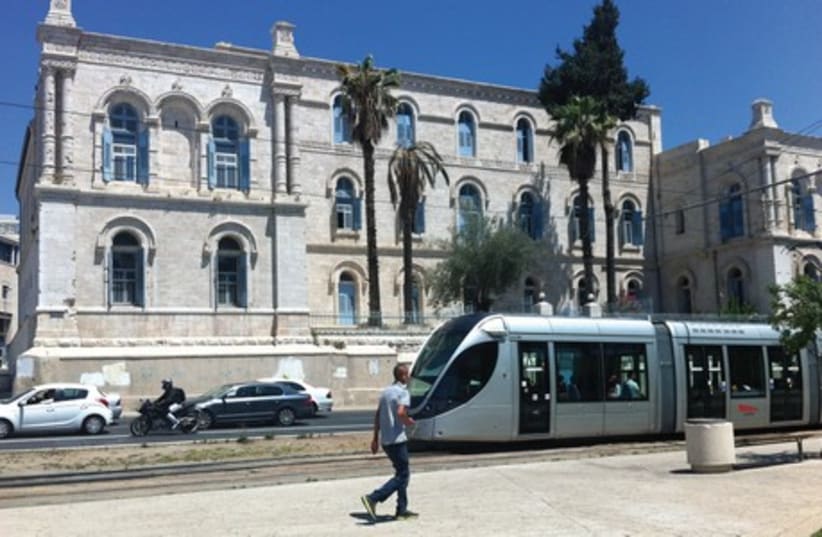Jerusalem, a city of 1,000 secrets, revealed one of them last Wednesday, when for the first time ever the press was invited to view the frescoes of Crusaders at the 19th-century St. Louis French Hospital – the long-term care facility and hospice for terminally ill Jews, Christians and Muslims, located opposite the New Gate and closed to the general public.The media tour, organized by Jerusalem district archeologist Amit Reem of the Antiquities Authority and hospital director Sister Monika Dullman of the Sisters of St. Joseph of the Apparition, highlighted the frescoes painted by pious French aristocrat and Jerusalem benefactor Marie Paul Amédée de Piellat (1851-1925) – a figure who could be compared in importance in the Holy City during the early modern period to Sir Moses Montefiore, except that he was on the other side of the Hebrew Bible- New Testament divide.The frescoes, depicting knights in armor and wearing swords, denote the genealogy of the French warriors during the Crusader period in the Holy Land from 1099 to 1291.
While some of the paintings were revealed thanks to a recently burst pipe and the necessity to repair the water damage, the decision to allow the facility’s historic and fragile frescoes to be photographed was taken out of worry for their future preservation.“There’s a great concern that if the funds aren’t provided to conserve the secco, the works of art will disappear within a few years,” said Reem, pointing to evidence of the flaking and damage.Monsieur le Comte de Piellat – a gifted artist – spent years painting his frescoes along the hospital’s corridors, chapel and stairwells. He worked in secco – a fresco technique in which pigments ground in water are tempered with egg yolk and then applied to plaster. While secco has the advantage over true fresco painting of allowing a longer working time and retouchability, it is not as permanent and the colors may flake off over time.In 1874 De Piellat first visited Jerusalem. Touring the French hospital in the Old City established in 1851 by the Sisters of St. Joseph, he was appalled by the clinic’s unsanitary conditions. Two years later, on his second visit to the city, he and his mother purchased the land opposite the northwest corner of the Old City that would become the French Compound. Not coincidentally, the hill was the very site where French Crusader leaders Tancred and Godfrey de Bouillon and their knights had besieged Jerusalem in 1099.There in 1881 the count, who saw himself as the last Crusader, founded the modern facility – which continues to function today, as the 50-bed St. Louis hospice. Completed in 1896, the medical center was commandeered by the Turks in 1914 to become an Ottoman military hospital. The frescoes, deemed objectionable since Turkey was at war with France, were defaced. De Piellat returned to Jerusalem after World War I and painstakingly scraped away paint to reveal some of his murals. The remainder remain hidden by a layer of Turkish paint.Dullman pointed out that St. Louis receives limited funding from the French government, Israel’s Health Ministry and the country’s various health funds. “We try to survive and give the best treatment possible. We depend on volunteers.”In 1987 the Düsseldorf, Germany-born nun arrived for a three-month stint as a volunteer. She returned full-time in 1999 after completing her theological studies. Now the hospital director, she said her decades of experience have taught her that while she may never be able to relieve all pain, she can help patients during their last and most difficult moments.Accordingly, she noted that Jesus spent his last night in the Garden of Gethsemane, alone. What she can offer, said the recipient of France’s Legion d’Honneur, is her simple presence, so that those in her care will not be alone in their final hours of suffering. “I realized that the last thing I can do for someone who is suffering is not to run away.” •‘Secret’ art on show
The St. Louis French Hospital reveals flaking paintings of Crusaders.
